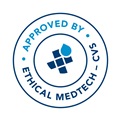
Biography
Biography: Novak-Jankovic Vesna
Abstract
Management of difficult airway is one of the most challenging tasks for anesthesiologists and failure of securing it could have fatal consequences. A difficult airway is defined as the clinical situation in which a conventionally trained anesthesiologist experiences difficulty with face mask ventilation and or difficulty with tracheal intubation. Difficult mask ventilation is defined as the inability of a trained anesthesiologist to maintain oxygen saturation >90% using a face mask, 100% oxygen and positive pressure ventilation. Difficult intubation is defined as the need for more than three attempts for intubation of the trachea or more than 10 minutes to achieve it. The incidence of difficult mask ventilation is estimated to be 0.9%-5% and the incidence of difficult intubation is 0.13%-13%. The major complications associated with the difficult airway include death, hypoxic brain injury, cardiopulmonary arrest, unnecessary tracheotomy, airway trauma including aspiration of gastric contents and damage of soft tissues and teeth. In order to avoid this fatal outcome, several societies have developed guidelines for management of the difficult airway. Anesthesiologists must be prepared to deal with problems in management of difficult airway at any time. Medical history and physical examination are important tools in prediction of the difficult airway. An airway physical examination should be performed prior to the initiation of anesthetic care in all patients. Focused medical history (previous anesthesia record or anesthesia document) may detect medical, surgical and anesthetic factors that may indicate the presence of a difficult airway. Difficult intubation can either be anticipated or unanticipated. An anesthesiologist must be aware of the possibility of both situations to arise and preparations must be taken to deal with such cases and improve the safety of our patients. Practice guidelines are systematically developed recommendations that help anesthesiologists in the management of difficult airway.

